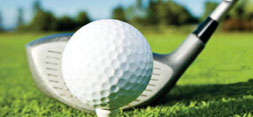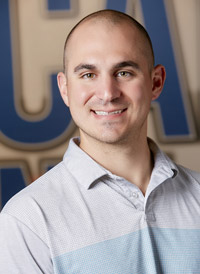By: Nick Cifelli, PT, DPT, CSCS, TPI Medical 2 Certified

Research suggests that golf provides enough physical activity to improve overall physical and psychological health in the population age 65 and up.1 Golf is a sport that can be played well into the 80s or 90s. However, it is important to note that certain swing mechanics can produce injurious stress to the body and sideline an individual.
Low back pain is the most common injury associated with golf ,3 accounting for 18-54% of all golfing injuries. This is most likely due to the high velocity that multiple body parts travel over a longer distance or range. The purpose of this article is to provide an understanding of why the low back is the most commonly injured body part, including different swing characteristics attributing to increased low back strain, and a few corrective exercises that people who experience back pain may benefit from.
The golf swing involves frequent rotation of the trunk, pelvis, and hips which could contribute to increased stress on the spine. There is an asymmetrical rotational force placed on the body when you compare the relatively slower backswing with the violent downswing.1 This asymmetry places varying degrees of force and load to different parts of the back. During the downswing phase, in a right-handed golfer, there is increased left rotation coupled with right side bend. This coupled movement places increased stress to the vertebrae on the right side and is why many right handed golfers will complain of right sided low back pain.2
An efficient swing starts with the set-up position. Maintaining a neutral pelvic alignment will allow more recruitment of the abdominals and the gluteal muscles which decreases stress to the back. If, however, a player sets up in an S-posture, he/she has lost their ability to adequately engage their abdominals and glutes leading to poor swing characteristics. The S-posture set up can cause an inability to rotate the pelvis and trunk properly, causing a player to stand up early in their swing (“early extension”), and cause a reverse spine angle at the top of the backswing. This is the number one reason for low back pain in golfers .3

Neutral posture S-Posture
Corrective exercises:
These specific exercises are intended to improve S-posture, prevent early extension, and prevent reverse spine angle. These few exercises are just a sample and each person is unique and may require a specific exercise to address their limitations. It is important to note, if you are unsure if you present with the S-posture swing characteristics, to reach out to a TPI certified physical therapist.
Resources
1. Lindsey, D. and Vandervoort, A. Golf-Related Low Back Pain: A Review of Causative Factors and Prevention Strategies. Asian Journal of Sports Medicine. 2014;5(4)
2. Morgan D, Sugaya H, Banks S. A new twist on golf kinematics and low back injuries. South Carolina: Clemson University; 1997
3. Titleist Performance Institute. Titleist Performance Institute. TPI Level 1 Certification Workshop 2020. TPI level 2 Certified Medical Professional Certification 2020. Workbook and Lecture Notes.
About the Author
 Nick Cifelli, PT, DPT, CSCS, TPI Medical 2 Certified
Nick Cifelli, PT, DPT, CSCS, TPI Medical 2 Certified
Doctor of Physical Therapy
Certified Strength and Condition Specialist
Titleist Performance Institute, Level 2 Certified
Phone: 609-245-7420
Nick is a Physical Therapist and works in the RWJ Rehabilitation office in Lawrenceville, NJ. Nick completed his Doctorate in Physical Therapy from Thomas Jefferson University. Nick has a special interest in general outpatient orthopedics, and loves to treat athletes and return them to their sport. The RWJ Rehabilitation Lawrenceville office looks forward to assisting you, whether it’s allow you to return to an activity you love, or any other musculoskeletal and neurological conditions. Please call our office at 609-245-7420 to schedule an appointment.